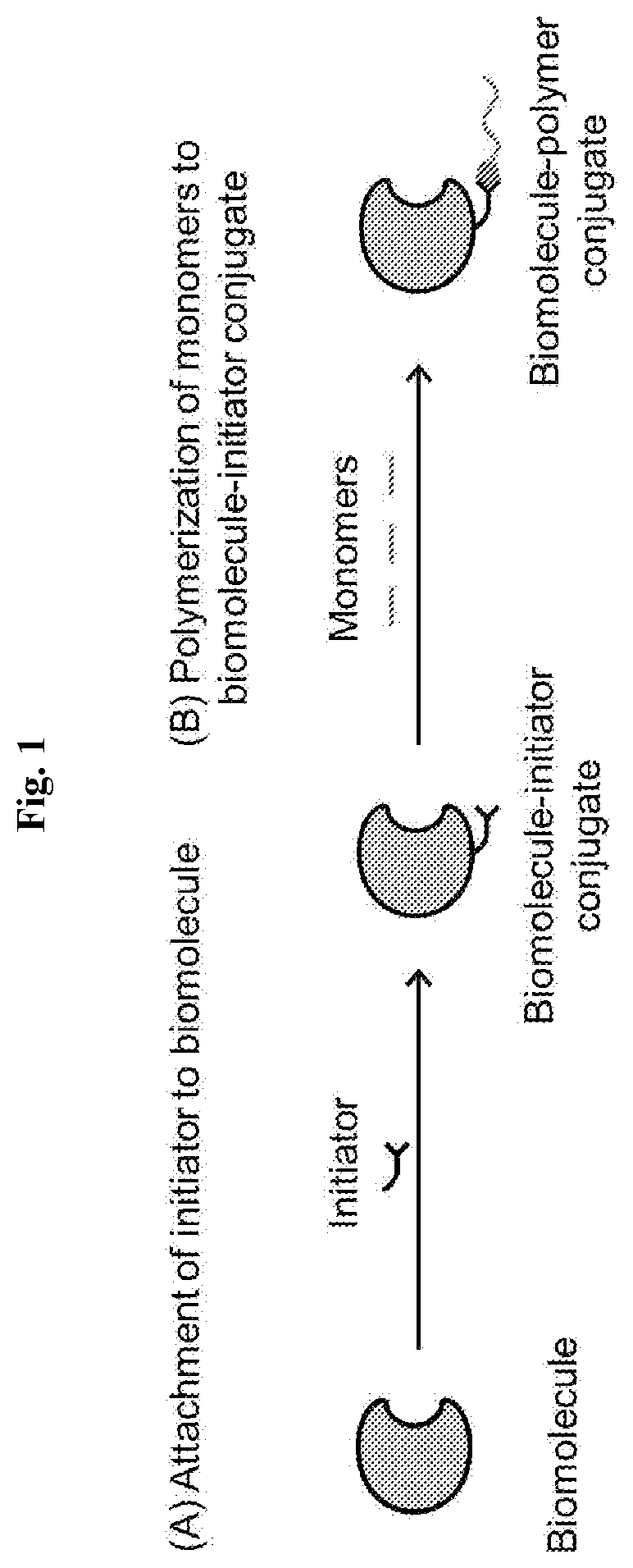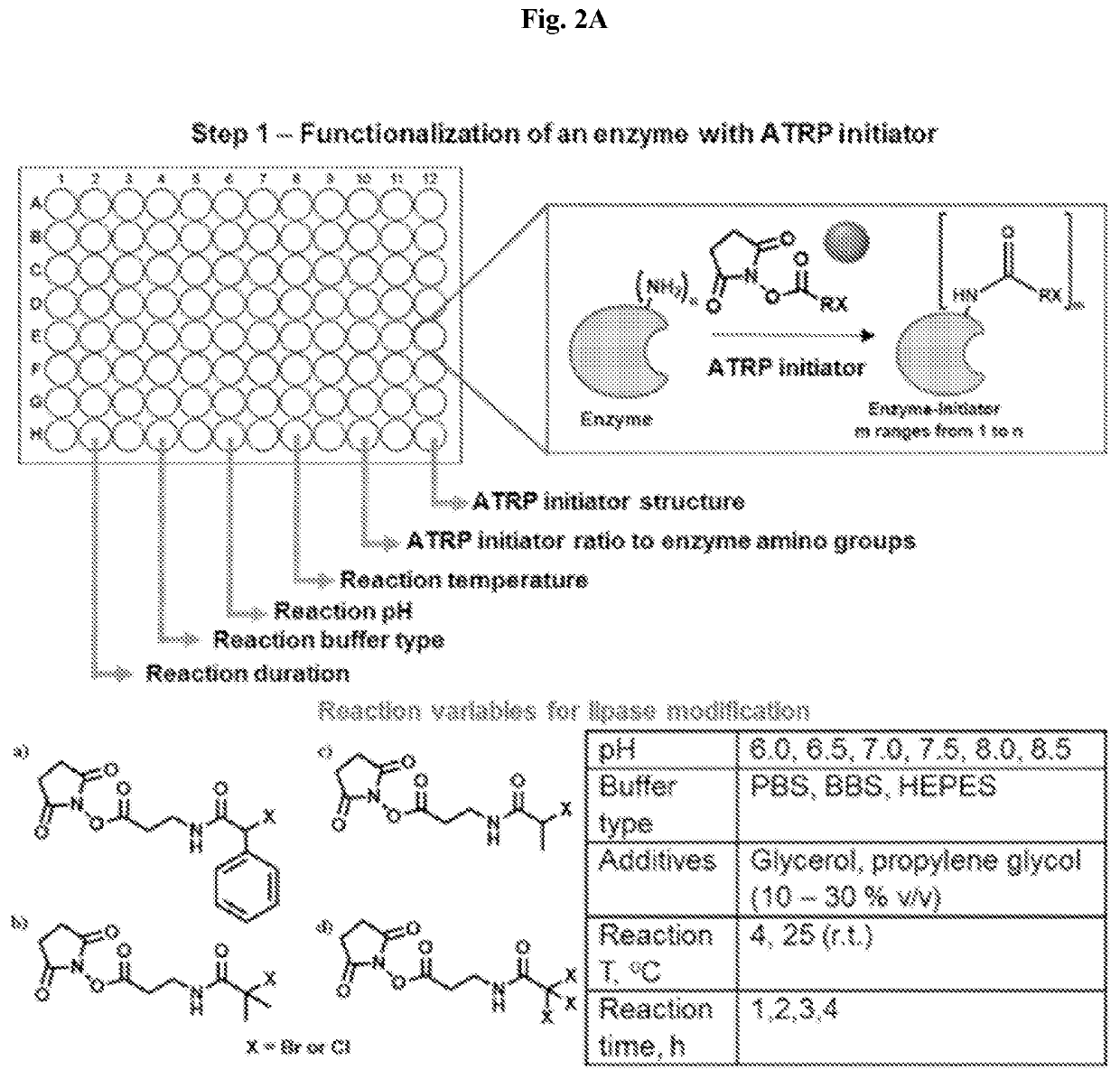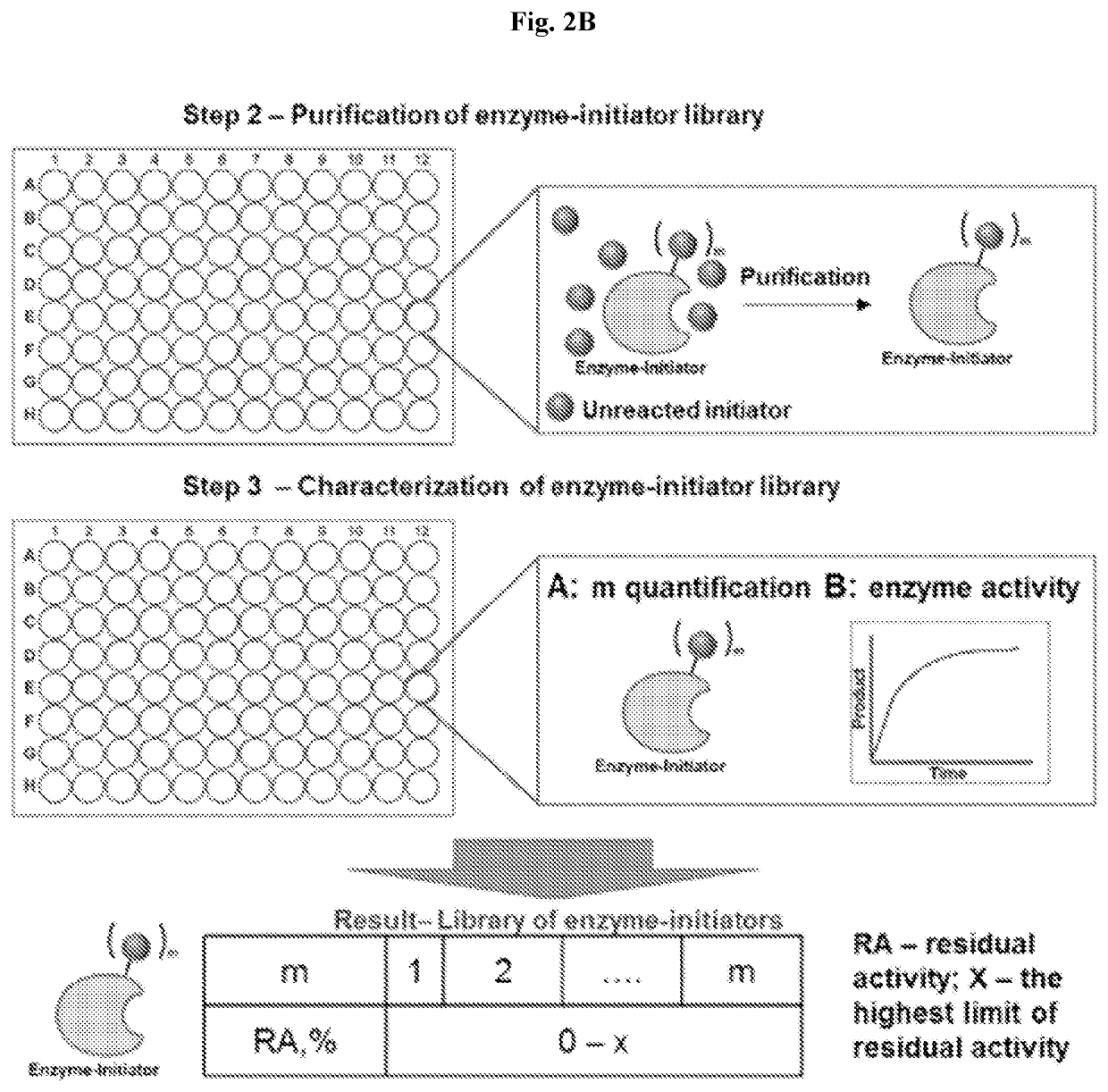High-throughput synthesis of biomolecule-polymer conjugates
a biomolecule and polymer technology, applied in the field of high-throughput synthesis of biomolecule-polymer conjugates, can solve the problems of limited development to only a few types of polymer modification per protein, low-throughput synthesis and characterization methods, etc., and achieve rapid and automated screening and enhanced properties.
- Summary
- Abstract
- Description
- Claims
- Application Information
AI Technical Summary
Benefits of technology
Problems solved by technology
Method used
Image
Examples
example 1
[0097]A therapeutic antibody, such as anti-TNF, is modified with a polymer using “grafted from” ATRP. Antibody-polymer conjugates are synthesized by targeted means in an oxygen free environment and are separated from reactants. There currently exists no way that all possible variants of modification density, polymer length and polymer chemistry can be generated in the same reacting system for simultaneous screening of efficacy. In the robotic ATRP high-throughput system, the antibody is simultaneously reacted with hundreds or thousands of variants that systematically probe the synthetic space of modification in a custom designed high-throughput protein polymer synthesis reactor.
[0098]The system requires simultaneous separations of reactants from products. Classically, each separation takes liters of dialysis fluids in two long dialysis steps. The custom designed protein-polymer conjugate high-throughput purifier instead uses milliliters of fluid during simultaneous in situ purificat...
example 2
[0101]In this example, a reversal of chymotrypsin (CT) surface charge using polymer-based protein engineering with pQA, a cationic polymer, is predicted. Other cationic synthetic polymers may be used to both deliver RNA nucleotide based therapies and to enable transport of drugs across the cell membrane. Modification of enzyme surface charge by site directed mutagenesis or synthetic chemistry is shown to cause dramatic effects on protein function. Specifically, modifying protein surface charge is shown to influence the stability and activity profiles of enzymes in non-aqueous solvents, such as ionic liquids, as well as shifting the pH-profile of enzyme activity.
[0102]Herein, “grafting from” ATRP to form a high density cationic shell around the chymotrypsin core is predicted. Exogenous chymotrypsin dosing is used to treat pancreatic exocrine deficiency, but low stability due to stomach acid degradation of unmodified chymotrypsin would require higher dosing. The high density cationic ...
example 3
[0107]Two polymers that show temperature responsiveness are pNIPAm and pDMAPS, though they respond to temperature in sharply distinct ways. pNIPAm exhibits LCST behavior, where above 32° C. the polymer experiences a reversible change in conformation, increasing its hydrophobicity and becoming immiscible in water. The same reversible change is seen for pDMAPS, except that this polymer is immiscible below the UCST. The UCST of pDMAPS exhibits strong dependence on polymer chain length and solution ionic strength while the LCST of pNIPAm is less variable, but is still affected by several factors, such as degree of chain branching and molecular weight.
[0108]It is possible to controllably manipulate the kinetics and stability of CT-pDMAPS and CT-pNIPAm bioconjugates using temperature as the trigger for a change in enzyme function. Both pNIPAm and pDMAPS are selected in order to examine changes in relative enzyme activity and stability at stimuli responsive temperatures both above and belo...
PUM
| Property | Measurement | Unit |
|---|---|---|
| temperature | aaaaa | aaaaa |
| temperature | aaaaa | aaaaa |
| LCST/UCST temperature | aaaaa | aaaaa |
Abstract
Description
Claims
Application Information
 Login to View More
Login to View More - R&D
- Intellectual Property
- Life Sciences
- Materials
- Tech Scout
- Unparalleled Data Quality
- Higher Quality Content
- 60% Fewer Hallucinations
Browse by: Latest US Patents, China's latest patents, Technical Efficacy Thesaurus, Application Domain, Technology Topic, Popular Technical Reports.
© 2025 PatSnap. All rights reserved.Legal|Privacy policy|Modern Slavery Act Transparency Statement|Sitemap|About US| Contact US: help@patsnap.com



